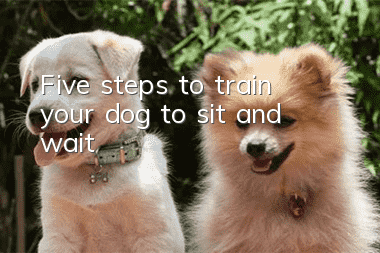Five steps to train your dog to “sit and wait”

"Sit and wait" for dogs is "basic waiting", which is to train the dog's concentration. It also uses this to let the dog know that the owner is the boss, and it must support the owner in giving orders. Before conducting waiting action training, it is best for the dog to have learned some basic actions, such as sitting down. And let the dog learn how to wait in a step-by-step manner from near to far.
Suitable age: 2 months-5 months
Training goal: Let the dog learn obedience and know what sit and wait is.
Applicable dog breeds: all dog breeds
Equipment: collar | leash | long leash | shrink rope | snacks
Level: Elementary school (entry)-simple obedience training
Training cycle: 15 minutes*5 times
Step 1: After your dog has learned the "sit" and "lying" training, you may wish to show it in front of your relatives and friends. The dog will definitely win everyone's applause! Of course, there is no end to learning. Well! The same is true for dogs. Let’s start learning new training programs. When starting the "waiting" training, the dog owner must find a quiet place without interruption, otherwise the dog will be easily distracted. After the training is stable, you can try to find some places with more complex environments for consolidation training to ensure that the dog can be trained at any time. Will obey orders under any circumstances.
The training method is: let the dog wear a collar, give it the "sit" command, and then give the dog a "stop" gesture to let it wait. If it moves, start again. If it doesn't move, continue to encourage it until the dog can hold still for 2 minutes.
Step 2: When the dog completes the command to sit down, please step back 1 to 2 steps and repeat the action of step 1. The purpose of this is to allow the dog to better consolidate the basic movements.
Step 3: Let the dog stay where he is and wait. You start walking left and right, so that the dog's eyes can follow your body.
Step 4: When the dog sits still, you can continue to move so that the dog is farther and farther away from you. No matter how far away you are from the dog, the dog will stay where it is and wait. Keep saying to the dog and still showing the "stop" gesture to let it wait.
Step 5: When the dog continues to wait at the same place for as long as you expect, return to the original place and encourage it, so that the dog understands that the owner can leave while waiting.
- The dog doesn't sleep at night and walks back and forth. What's the reason why the dog doesn't sleep at night?
- How to treat urinary tract stones in dogs? Dogs may need surgery!
- What should I do if my dog has no milk? The owner should check quickly and don’t let the puppies starve to death.
- How to make your dog’s hair look beautiful. Looking at your dog’s hair with beautiful hair makes you feel good!
- Dog’s anal gland odor, please note that this is a sign of your dog’s health!
- What are the symptoms of dog pain? How to detect dog pain early
- How to make your dog like to eat dog food Four ways to make your dog fall in love with dog food
- Can dogs digest peach pits if they eat them? Can dogs digest peach pits if they accidentally eat them?
- How to protect your dog’s food? Teach you tips on training your dog
- Why do dogs defecate everywhere? How can dogs stop defecating everywhere?



